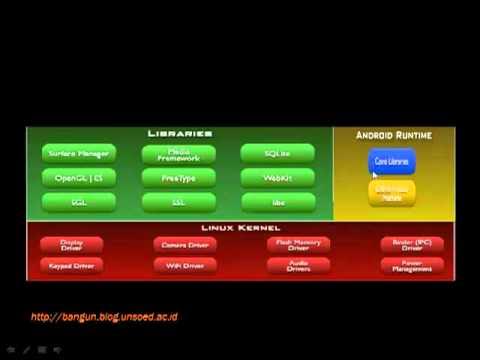Activities & the Activity Lifecycle - Android Basics 2023
Summary
TLDRThis video introduces a new playlist, 'Android Basics,' focusing on core concepts for native Android development. It's aimed at both newcomers and experienced developers seeking to deepen their understanding. The playlist assumes knowledge of Kotlin and doesn't cover UI building with Jetpack Compose. The first video delves into activities and their lifecycle, explaining the different states from creation to destruction. It clarifies the purpose of activities as user interaction units and entry points for app launches. The script uses theater and desktop window analogies to simplify lifecycle concepts, emphasizing the importance of lifecycle management for resource handling and user experience.
Takeaways
- 📚 The video introduces a new playlist 'Android Basics' focusing on core concepts for native Android development.
- 👶 It targets both beginners and experienced developers looking to deepen their understanding of fundamental Android concepts.
- 🔒 The playlist assumes knowledge of Kotlin, the programming language used for native Android development.
- 🚫 It will not cover UI building with Jetpack Compose, as there is a separate playlist dedicated to that topic.
- 📈 The first video in the series discusses activities and their lifecycle in Android development.
- 🏗️ An activity in Android serves as a container for screens and a unit of interaction for users, not just a screen container.
- 🔄 The lifecycle of an activity includes various states such as created, started, resumed, paused, stopped, and destroyed.
- 📈 The script simplifies the complex official Android activity lifecycle diagram, making it easier to understand.
- 🛠️ Developers can override functions within an activity to react to different lifecycle states, such as onCreate, onStart, onResume, onPause, onStop, onRestart, and onDestroy.
- 🔧 The script provides an example of logging within the lifecycle methods to demonstrate their order of execution.
- 🔄 The activity lifecycle is crucial for managing resources and user interactions within an Android app.
- 👍 The video encourages viewers to subscribe for more Android basic videos released every Wednesday and Sunday.
Q & A
What is the purpose of the new playlist 'Android Basics'?
-The purpose of the 'Android Basics' playlist is to explain the core Android concepts used in native development, targeted not only at beginners but also at those who are already familiar with some Android development and wish to deepen their knowledge.
What does the playlist assume about the viewer's prior knowledge?
-The playlist assumes that the viewer knows Kotlin, the programming language used for native Android development, and it will not cover UI building as that is covered in a separate Jetpack Compose playlist.
Why are some Android concepts like fragments excluded from the playlist?
-Fragments and other concepts that don't find much application nowadays due to Jetpack Compose are excluded from the playlist, as most new Android apps do not use them anymore.
What is the main focus of the first video in the playlist?
-The main focus of the first video is on activities and their lifecycle, explaining what activities are and how they function within the Android ecosystem.
What is an Activity in Android, according to the video?
-An Activity in Android is a container for one or multiple screens in an app and is considered a unit of the app where users interact with, serving as an entry point for the app as well.
How does the video describe the transition from using multiple activities to using fragments and then to Jetpack Compose?
-The video describes a historical transition: initially, there was one activity per screen, then with the introduction of fragments, multiple related screens were bundled into one activity. With Jetpack Compose, the trend is to have a single activity in the whole app, hosting multiple screens.
What is the Android Activity lifecycle, and why is it important?
-The Android Activity lifecycle refers to the various states an Activity goes through from creation to destruction. It is important because it helps developers understand and manage the state of an Activity and its resources effectively.
What are the key states in the Activity lifecycle mentioned in the video?
-The key states mentioned are onCreate, onStart, onResume, onPause, onStop, onRestart, and onDestroy.
How does the video explain the difference between the onPause and onStop states?
-The video explains that in the onPause state, the Activity is still in the background and could still be visible to the user, such as behind a dialog. In contrast, in the onStop state, the Activity is no longer visible to the user at all.
What is a special case that can cause the Activity lifecycle to reach the destroyed state, as mentioned in the video?
-A special case mentioned is configuration changes, such as screen rotation or language switch, which can cause the Activity to be recreated, and the lifecycle to start again from onCreate.
How does the video illustrate the Activity lifecycle with code examples?
-The video provides code examples with overridden lifecycle methods, such as onCreate, onStart, onResume, onPause, onStop, onRestart, and onDestroy, and demonstrates how these methods are called during different stages of the Activity lifecycle.
Outlines

This section is available to paid users only. Please upgrade to access this part.
Upgrade NowMindmap

This section is available to paid users only. Please upgrade to access this part.
Upgrade NowKeywords

This section is available to paid users only. Please upgrade to access this part.
Upgrade NowHighlights

This section is available to paid users only. Please upgrade to access this part.
Upgrade NowTranscripts

This section is available to paid users only. Please upgrade to access this part.
Upgrade NowBrowse More Related Video

#1 Pengantar Pemrograman Mobile

What Is Kotlin Multiplatform And How Does It Work? - KMP for Beginners

Introduction IF324 Pemrograman Perangkat Bergerak

Introduction To Android Application Development | Simplilearn

Belajar Android bagian 2 (Arsitektur Android & Application Building Blocks)

Cara Install React Native + Full Setup [2024]
5.0 / 5 (0 votes)